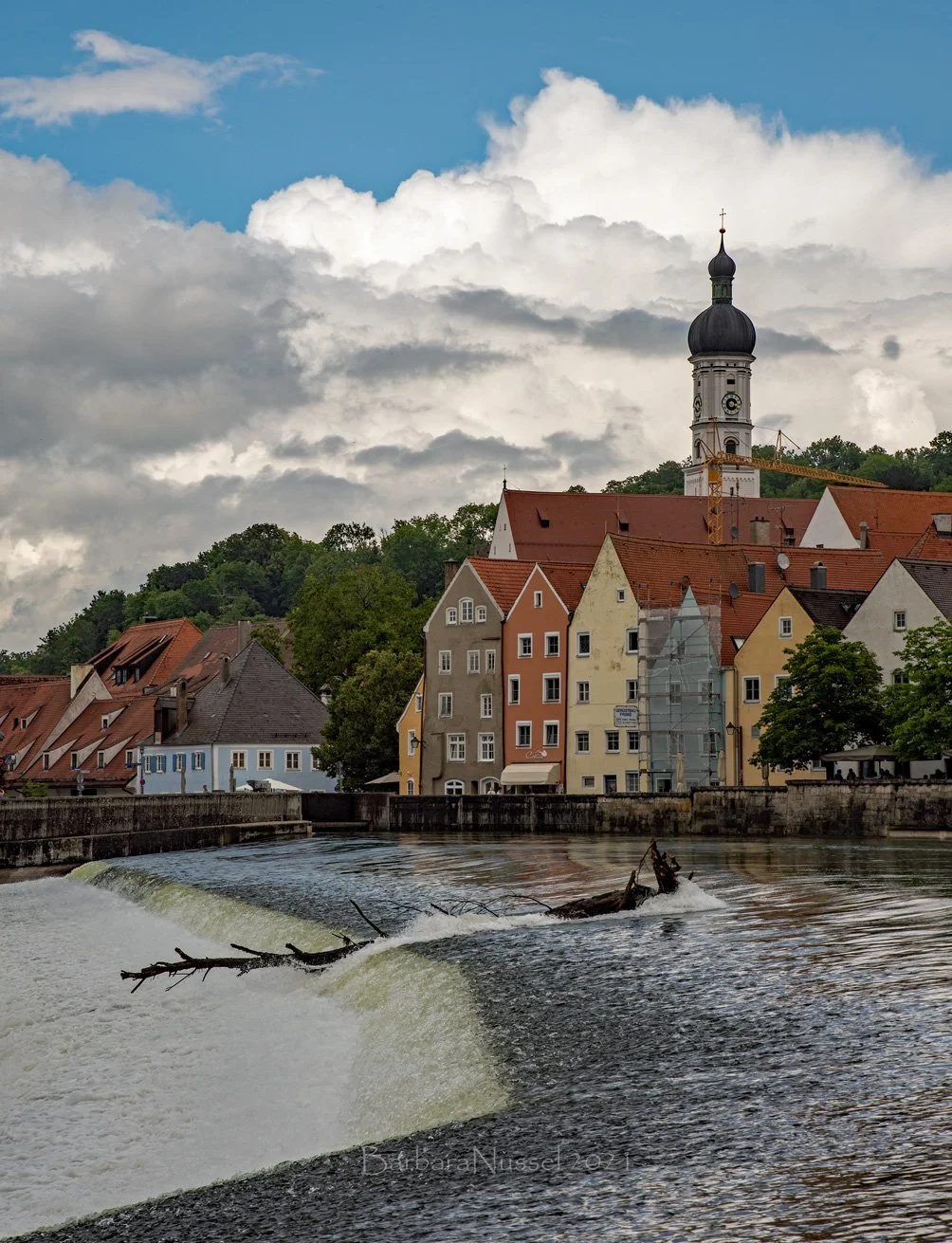Landsberg am Lech is one of the many small picturesque medieval towns along the famous “Romantic Road” in Bavaria, but unlike it’s more famous cousins like Füssen, Dinkelsbühl or Rothenburg ob der Tauber, it often gets passed over by tourists.
Landsberg is a small town, and its historic center can easily be explored by foot in half a day, but it has so many postcard perfect views that you might want to spend extra time, especially if you’re into photography.
A little bit of history -- Landsberg am Lech, like so many places in this part of Bavaria, was an important point on the Via Claudia Augusta, a Roman trade route which came up from Italy and headed towards Augsburg. Landsberg developed where a major historic salt road crossed over the Lech. The Lech could be forded here and there was a high point for a fortification which would protect the road and river routes. The Bavarian ruler Henry the Lion built such a fortified area in the 12th century, which was known as the "Landesperch". In 1315, the town burned down, but was rebuilt because of its important location. In 1320, Landsberg was permitted to collect salt duties, bringing considerable wealth to the town. In 1419, a river tax added a further source of income.
When is the best time to visit? Well, I’ve been there in the dead of winter, I’ve been there in the summer on a day of sudden downpours, and I’ve been there on a lovely sunny day in late spring. Every season has its own charm, but who doesn’t like a warm, sunny day when you can enjoy all the outdoor cafes?




I like to start my exploration on the west side of the river Lech as there’s public parking, and I immediately get the gorgeous view of the fast-flowing river Lech tumbling in white cascades over the Lechwehr, an impressive 4-tier-weir with its origin in the 14th century. No better postcard view than the Lech, the weir, and the colorful houses across the river.









Walking across Karolinenbrücke (Caroline’s bridge) ) you’ll notice an impressive building with a painted façade, this is the former Ursuline convent. Continuing along this street you’re only steps from the main square with the Marienbrunnen (St. Mary’s fountain), built in the early 18th century, the impressive Rathaus (Town Hall) with its Rococo façade, designed and built by architect Dominikus Zimmermann, many beautiful, colorful houses, and the Schmalzturm (“lard tower”) going back to the 13th century.











Alternatively, you can walk along the river promenade (turn left after you crossed the bridge), where you’ll find many nice cafes, restaurants, ice cream parlors to relax and enjoy the view and the sunset. If you decide to delay the rest stop for later, and keep walking, you’ll soon discover another weir where part of the river Lech was diverted through town to power mills and allow the transportation of goods on rafts.




Along this part, you’ll discover a row of quaint little private dwellings, reminiscent of the Fuggerei in Augsburg. Well, these houses used to be warehouses for salt and other goods, which had arrived on rafts from upriver. Most of them had been built in the 18th century, but by now have been converted to private dwellings.




If you haven’t yet worn yourself out wandering all across town on cobblestone streets, admiring colorful houses, maybe also stopping at the town parish church Mariä Himmelfahrt (Mary’s Assumption) , dating to the 15th century (images), there’s more to see up on the hill.




There are various ways to go uphill, either you just leave the main square through the gate of the Schmalzturm and follow the road uphill. You’ll pass many lovely vintage store fronts on your way up.



Soon you’ll see a sign pointing you towards the Neues Stadtmuseum (New Town Museum) and the Heilig Kreuz Kirche (Church of the Holy Cross).






You can return downtown by taking a steep narrow stairway. Or you continue towards the Bayertor and the historic town walls. Walking along the old town fortification offers some beautiful views of downtown, especially in the winter when the trees are without leaves.







For more info visit the official website of the town of Landsberg am Lech, where you can download a free city map: https://www.landsberg.de/

